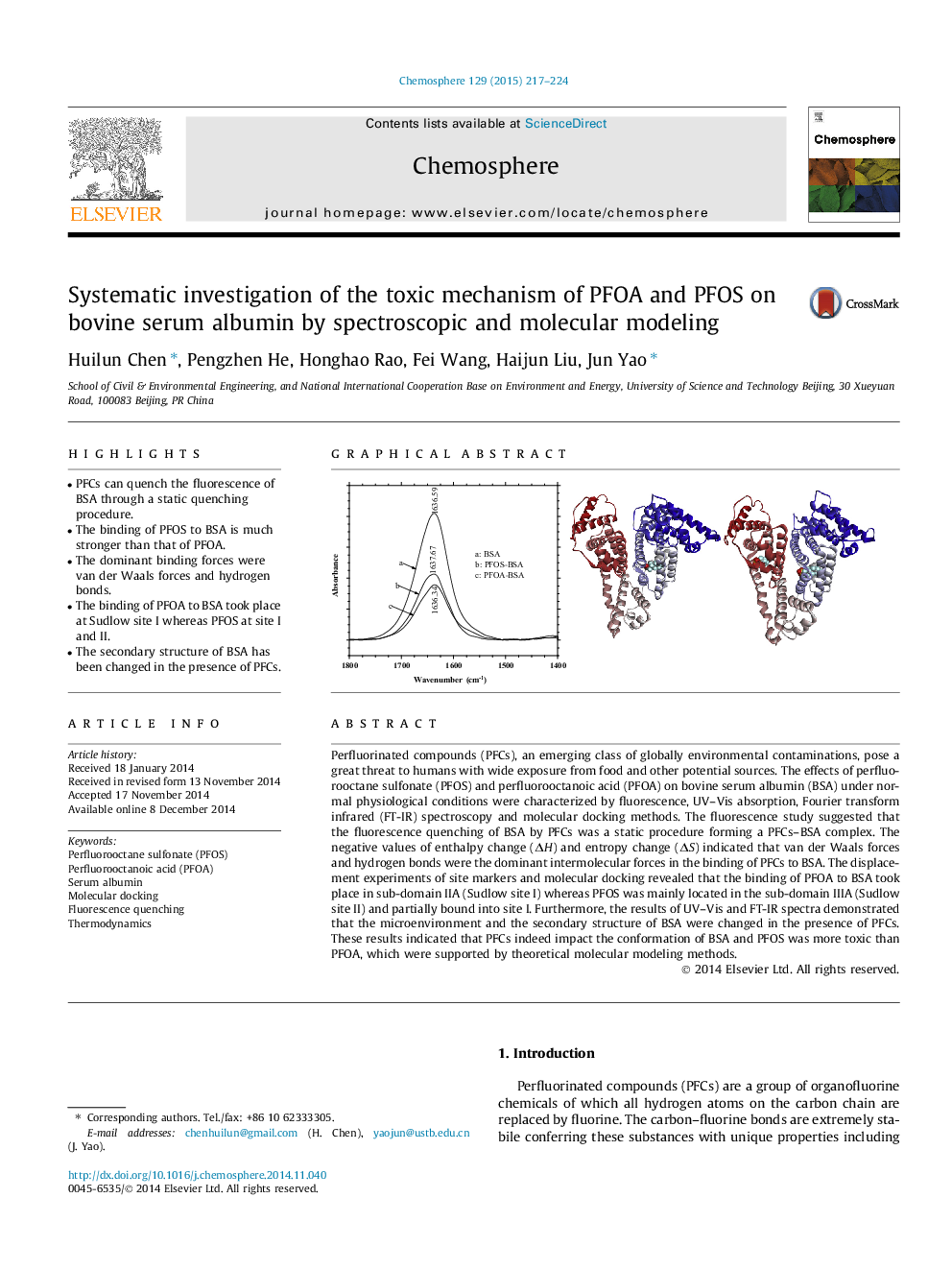| Article ID | Journal | Published Year | Pages | File Type |
|---|---|---|---|---|
| 4408455 | Chemosphere | 2015 | 8 Pages |
•PFCs can quench the fluorescence of BSA through a static quenching procedure.•The binding of PFOS to BSA is much stronger than that of PFOA.•The dominant binding forces were van der Waals forces and hydrogen bonds.•The binding of PFOA to BSA took place at Sudlow site I whereas PFOS at site I and II.•The secondary structure of BSA has been changed in the presence of PFCs.
Perfluorinated compounds (PFCs), an emerging class of globally environmental contaminations, pose a great threat to humans with wide exposure from food and other potential sources. The effects of perfluorooctane sulfonate (PFOS) and perfluorooctanoic acid (PFOA) on bovine serum albumin (BSA) under normal physiological conditions were characterized by fluorescence, UV–Vis absorption, Fourier transform infrared (FT-IR) spectroscopy and molecular docking methods. The fluorescence study suggested that the fluorescence quenching of BSA by PFCs was a static procedure forming a PFCs–BSA complex. The negative values of enthalpy change (ΔH) and entropy change (ΔS) indicated that van der Waals forces and hydrogen bonds were the dominant intermolecular forces in the binding of PFCs to BSA. The displacement experiments of site markers and molecular docking revealed that the binding of PFOA to BSA took place in sub-domain IIA (Sudlow site I) whereas PFOS was mainly located in the sub-domain IIIA (Sudlow site II) and partially bound into site I. Furthermore, the results of UV–Vis and FT-IR spectra demonstrated that the microenvironment and the secondary structure of BSA were changed in the presence of PFCs. These results indicated that PFCs indeed impact the conformation of BSA and PFOS was more toxic than PFOA, which were supported by theoretical molecular modeling methods.
Graphical abstractFigure optionsDownload full-size imageDownload as PowerPoint slide
